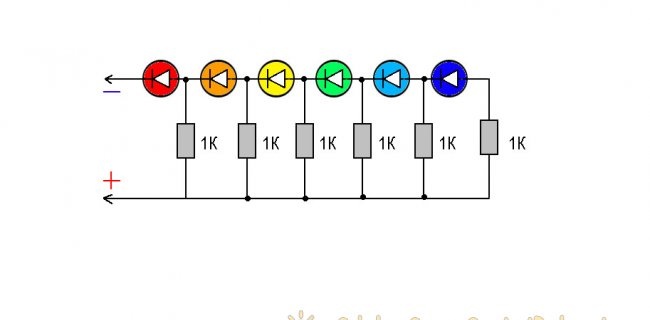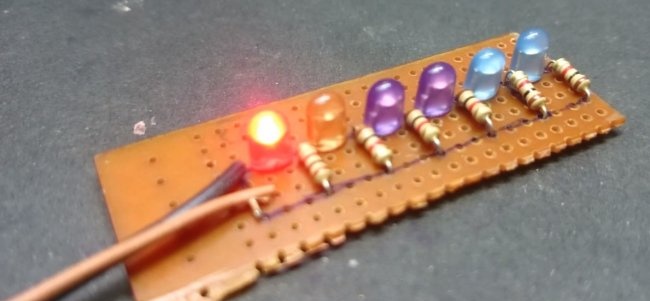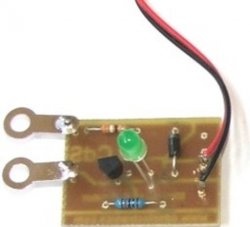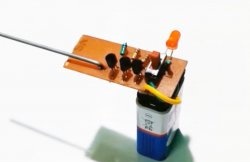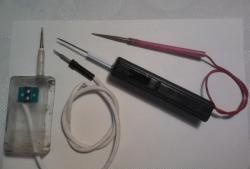Indicator chart
The operation of the device is based on the initial voltage for switching on the LED. Any LED is a semiconductor device that has a voltage boundary point, only exceeding which it starts to work (shine). Unlike an incandescent lamp, which has almost linear current-voltage characteristics, the characteristic of a zener diode is very close to a LED, with a sharp current slope with increasing voltage.
If you turn on the LEDs in the circuit in series with the resistors, then each LED will start to turn on only after the voltage exceeds the sum of the LEDs in the circuit for each segment of the circuit separately.
The threshold voltage of the opening or start of tanning of the LED can vary from 1.8 V to 2.6 V. It all depends on the particular brand.
As a result, each LED lights up only after the previous one lights up.
Battery Level Indicator Assembly
I assembled the circuit on a universal circuit board, soldering the output of the elements together. For a better perception, I took LEDs of different colors.
Such an indicator can be made not only on six LEDs, but, for example, on four.
You can use the indicator not only for the battery, but to create an indication of the level on the music speakers. By connecting the device to the output of the power amplifier, parallel to the column. In this way, critical levels for the speaker can be monitored.
It is possible to find other applications of this, in truth, a very simple scheme.
